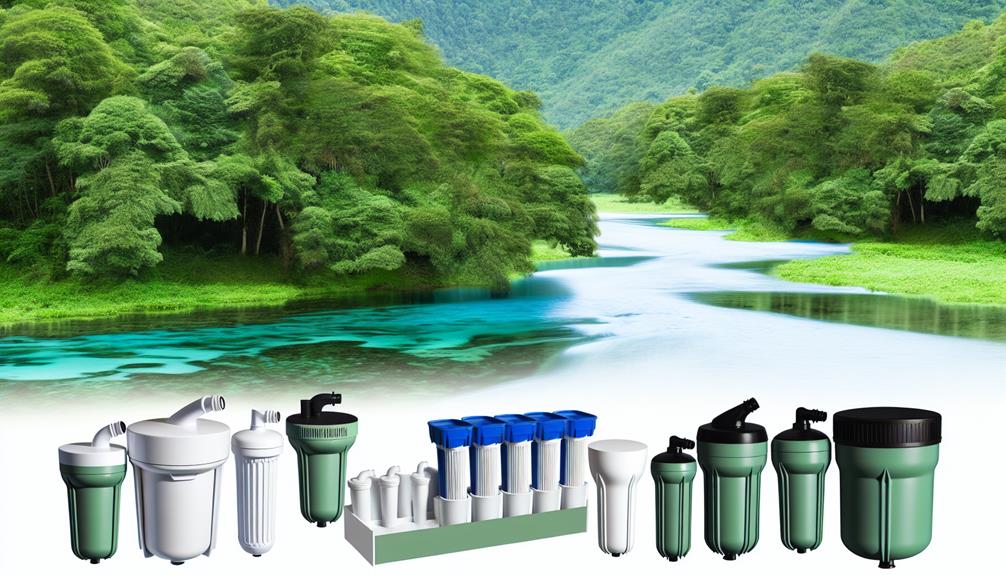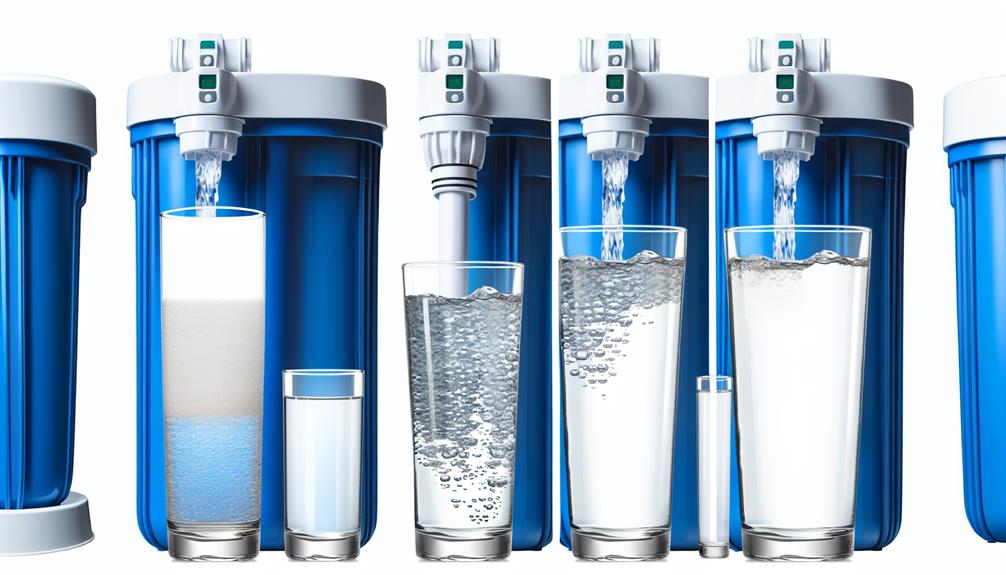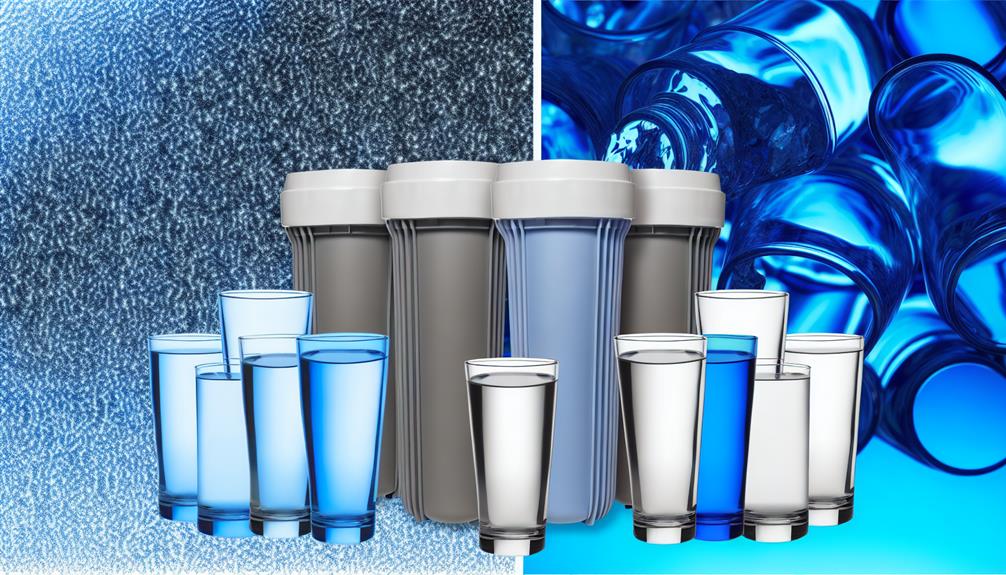Navigating the waters of under-sink water filters can be akin to finding a beacon of purity in a sea of contaminants. You're on a quest for crisp, clean water straight from your tap, but with a myriad of options, it's crucial to discern which system can truly deliver on its promises.
In this comprehensive review, you'll find the top 14 under-sink water filters, each scrutinized for their performance in filtration, ease of installation, maintenance, longevity, cost-efficiency, and environmental impact.
While I'll guide you through the murky depths of technical specs and user experiences, it's the subtle differences that may tip the scales in favor of one system over another.
So, stay tuned as we uncover which filters stand out and why, perhaps revealing the perfect solution that lies just beneath your sink, waiting to be tapped.
Assessing Filtration Performance

Evaluating the performance of under-sink water filters necessitates a close examination of their ability to remove contaminants and impurities from your water supply. You must scrutinize filter certifications to ensure they meet rigorous industry standards. Certifications from organizations such as NSF International or the Water Quality Association are pivotal, as they indicate the filter has been independently tested for contaminant reduction efficacy.
When you're dissecting the specifications, pay attention to the list of contaminants each filter claims to reduce. The most effective under-sink filters won't only tackle common pollutants like chlorine, lead, and pesticides but also more insidious substances such as pharmaceuticals and heavy metals. The percentage of contaminant reduction should be high, typically above 95%, to deem a filter as highly capable.
Moreover, examine the technology behind the filter. Is it a simple carbon filter, or does it incorporate advanced methods like reverse osmosis or UV purification? The complexity of the system often correlates with a broader range of impurities being addressed.
Installation and Maintenance Ease
While ensuring your under-sink water filter excels in contaminant removal is crucial, it's equally important to consider how straightforward the installation process is and what the filter demands in terms of ongoing maintenance. You want a system that won't require a professional every time you need to replace a cartridge or adjust settings—this convenience is a game-changer.
Consider these critical factors:
- Installation Simplicity
- *Tools Required*: Often only common household tools are needed, but verify this before purchasing.
- *Instruction Clarity*: Detailed, step-by-step guides can alleviate the stress of DIY installation.
- Maintenance Requirements
- *Cartridge Lifespan*: Longer-lasting filters reduce the frequency of maintenance tasks.
- *Accessibility*: Filters should be easy to reach for hassle-free replacement.
When examining water pressure and space requirements, be analytical:
- Water Pressure
- Some filters can reduce water flow; ensure the system you choose maintains robust water pressure.
- Space Requirements
- Compact designs are preferable in tight spaces; measure your under-sink area to ensure a proper fit.
Choosing a filter that balances performance with ease of installation and maintenance ensures you're investing in a system that delivers pure water without causing headaches.
Filter Longevity and Replacement

To maximize your investment, you'll need to consider the lifespan of your under-sink water filter's cartridges and the specifics of their replacement schedule. The longevity of a filter cartridge is pivotal in determining overall cost-effectiveness and ensuring consistent water quality. Typically, cartridges may last anywhere from 3 to 12 months, depending on usage and the level of contaminants in your water.
It's crucial to adhere to the manufacturer's recommended replacement schedule to maintain optimal performance. Overextending the use of a filter can lead to reduced efficacy and potentially compromise your water quality.
Many modern systems come equipped with filter indicators or replacement alerts, providing a convenient way to monitor filter life. These features take the guesswork out of maintenance and can either be time-based or measure water throughput to accurately signal when a replacement is due.
Below is an overview of key considerations regarding filter longevity and replacement:
| Aspect | Detail |
|---|---|
| Replacement Cycle | Manufacturer's suggested timeframe or based on water usage |
| Filter Indicators | Visual or audible alerts signaling the need for replacement |
| Maintenance Impact | Neglecting timely replacement can degrade water purity |
Stay vigilant with these indicators to ensure you're not caught off guard by a sudden need for filter change.
Cost-Efficiency Analysis
Understanding the cost-efficiency of under-sink water filters requires analyzing both the initial investment and the ongoing expenses associated with filter replacements and maintenance. While the upfront cost may seem daunting, the long-term savings and health benefits can be substantial.
Here's a breakdown:
- Initial Investment
- Purchase price of the system
- Installation costs (if not DIY)
- Ongoing Expenses
- Replacement filters
- Potential maintenance or repairs
Consider the following aspects to determine the true cost-efficiency:
- *Health Benefits*: Access to clean, contaminant-free water can reduce potential health risks and medical expenses.
- *Space Requirements*: Under-sink filters are space-savers, negating the need for bulky external systems that could otherwise incur additional costs.
From an analytical standpoint, calculate the cost per gallon of filtered water to compare with bottled water or pitcher filters. Remember, the longevity of a filter directly impacts the frequency of replacements, which in turn affects the overall cost-efficiency. By choosing a durable and long-lasting filter, you're not only ensuring consistent water quality but also maximizing your investment.
Make sure to account for these factors in your analysis to make an informed decision that balances financial prudence with health and wellbeing.
Environmental Impact Considerations

Beyond the cost-efficiency of under-sink water filters, it's crucial to examine their environmental footprint, considering the reduction of plastic waste compared to bottled water use. When you opt for an under-sink water filter, you're making a significant impact on the environment by minimizing your water footprint and drastically cutting down on plastic usage.
The production and disposal of plastic bottles contribute to environmental degradation, whereas a water filter offers a more sustainable solution. Filters typically require less frequent replacement, reducing waste. Moreover, by filtering tap water, you avoid the transportation emissions associated with bottled water.
Here's an analytical look at the environmental benefits of under-sink water filters:
| Impact Area | Benefit of Under-Sink Water Filters |
|---|---|
| Plastic Waste Reduction | Less frequent replacement than bottles |
| Water Footprint | Reduced through efficient filtration |
| Carbon Footprint | Lower due to elimination of transport |
| Longevity | Durable systems with less overall waste |
It's evident that the choice of an under-sink water filter is not only beneficial for your wallet but also for the planet. By understanding these environmental considerations, you're equipped to make an informed decision that aligns with a sustainable lifestyle.
Conclusion
You've explored the top-tier under-sink water filters, weighing their filtration efficacy, ease of installation, and upkeep.
You've analyzed longevity, cost-efficiency, and environmental impacts.
Armed with this comprehensive review, you're set to make an informed choice.
Remember, the best filter balances performance with sustainability, ensuring clean water without breaking the bank or harming the planet.
Choose wisely, and you'll secure not just purity in every drop but also peace of mind for years to come.

